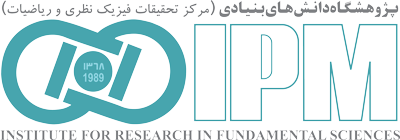“School of Particles”
Back to Papers HomeBack to Papers of School of Particles
| Paper IPM / Particles / 17036 | ||||||||||||||||||||||||
|
||||||||||||||||||||||||
| Abstract: | ||||||||||||||||||||||||
|
We investigate properties of the ground-state and first radially excited four-quark mesons X0 and X′0 with a diquark-antidiquark structure [ud][¯c¯s] and spin-parities JP=0+. Our aim is to reveal whether or not one of these states can be identified with the resonance X0(2900), recently discovered by the LHCb collaboration. We model X0 and X′0 as tetraquarks composed of either axial-vector or scalar diquark and antidiquark pairs. Their spectroscopic parameters are computed by employing the QCD two-point sum rule method and including into analysis vacuum condensates up to dimension 15. For an axial-axial structure of X(′)0, we find partial
widths of the decays X(′)0→D−K+ and X(′)0→D0K0, and estimate full widths of the states X(′)0. To this end, we calculate the strong couplings at the vertices X(′)0DK in the framework of the light-cone sum rule method. We
use also technical approaches of the soft-meson approximation necessary to analyze tetraquark-meson-meson vertices. Obtained results m=(2545±160) MeV and m′=(3320±120) MeV [mS=(2663±110) MeV and m′S=(3325±85) MeV for a scalar-scalar current] for the masses of the particles X0 and X′0, as well as estimates for their full widths Γ0=(140±29) MeV and Γ′0=(110±25) MeV allow us to interpret none of them as the resonance X0(2900)
. At the same time, these predictions provide important information about ground-state and radially excited diquark-antidiquark structures X0 and X′0, which should be objects of future experimental and theoretical studies.
Download TeX format |
||||||||||||||||||||||||
| back to top | ||||||||||||||||||||||||



















